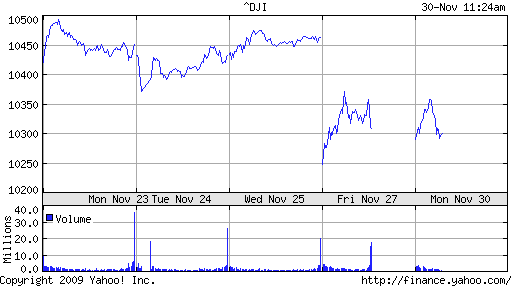So, was Dubai’s stumble into deadbeat status a big deal, a little deal, a huge deal, a nothing deal or something we can’t quite figure out yet?
At first markets around the world tanked on Thursday when news spread that a state-backed entity in the Persian Gulf state of Dubai had told holders of US $59 billion in debt that, “Well guys, we can’t pay out that interest we owe you. But just give us six months or so and we’ll get it all to you.” (I imagine that’s exactly what millions of American homeowners have been telling their bankers about their mortgages.)
Read Also

Higher farmland taxes for investors could solve two problems
The highest education and health care land tax would be for landlords, including investment companies, with no family ties to the land.
That doesn’t tend to go over really well in financial markets in general, and certainly not in the risk-averse bond market, where a steady flow of interest income and absolute safety of principal is sacrosanct. So the markets tanked Thursday, except in the U.S., where they were closed for their late version of Thanksgiving. They tanked when they reopened on Friday.
But since then the markets have stabilized and calming voices have said that this particular glitch can be handled. (Bear Stearns, anyone?) And the main bank in the United Arab Emirates said some reassuring stuff. It’s like the markets can’t decide which way to go. Take a look at these charts for Japan, Britain and the U.S. main stock indices:



That looks to me like a market that doesn’t know which way to go.
Is that any surprise? It’s still anyone’s guess whether we’re actually in a “recovery” or are falling deeper into the grasp of a recession. Every day the statistical machine keeps cranking out its sausages, and every day the flavour is radically different. Some suggest recovery is real and occurring. Others imply underlying economic conditions are worsening. Just look at the stats on “Black Friday,” which was this past Friday, the day after U.S. Thanksgiving when Americans throng their stores at the beginning of the Christmas rush and snap up door-crasher deals. (Half of Winnipeg went to Fargo and Grand Forks on Friday.) How do you read these stats that I ripped from the New York Times this morning: 195 million shoppers took part in Black Friday this year compared to 172 million last year; total spending was about the same, at $41.2 billion; per capita spending dropped to $343.31 from $372.57 last year. So more people want to be out shopping, but they’re being more tight-fisted. What’s that a sign of?
The charts show a setback following the Dubai kick-in-les-pantalons, but a vacillating couple of days since. Bears are seeing this as confirmation that a rash of bond defaults from national, state and municipal government is likely to begin, while bulls see the reaction as a sign of a pullback to a more reasonable growth line after the recent eight month rally. Bears don’t see any true signs of recovery and are waiting a number of shoes to fall. Bulls just think the market might have gotten a wee bit ahead of itself.
This is all just a sign of the precarious nature of the rally that has occurred since March 9 and the assumptions that underly it. Is this just an aftershock, or a tremor for a quake about to come? The implications for agricultural commodities are huge. Much of the peppiness in ag markets in the past month or two have come from investment funds piling back into commodities as a hedge against the inflation they expect to see in a recovery. That’s a big reason we’ve been having a counterseasonal rally. If the economy goes bad again, they won’t have a reason to stay in the ags or other commodities because there won’t be much need to fear inflation.
And while grains demand tends to keep fairly level even in bad times, that’s not true of the meats. This morning a hog marketing agency manager told me that the slump in world economies has been a major cause of the present paralyzing problems and it’ll take real, sustained growth to pull the industry out of the problems and show a future worth sticking around for. The charts above show that the world’s markets aren’t sure that this economic recovery is coming, although they haven’t decided another slump is coming either. They’re just going to keep us in suspense for now.















